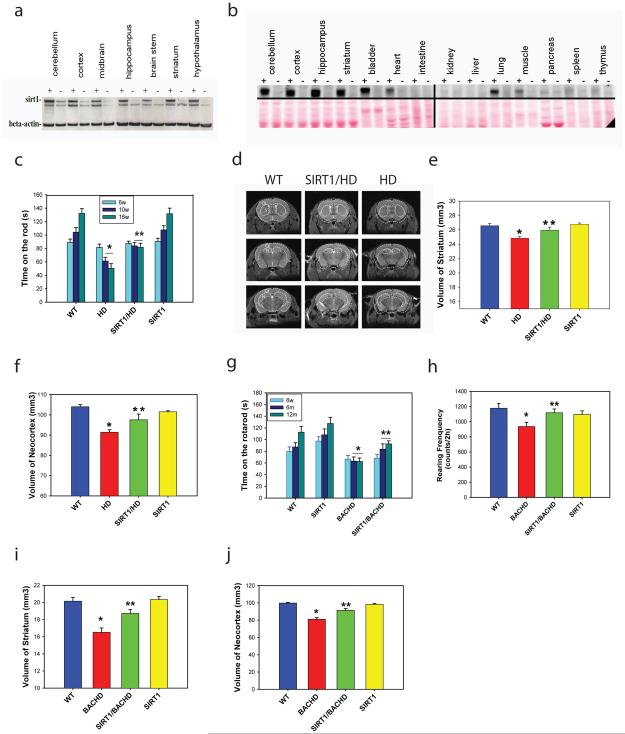Figure 1. SIRT1 improves the motor function and attenuates brain atrophy in N171-82Q HD mice and BACHD mice.
(a) Transgene SIRT1 expression was detected in different brain regions of SIRT1 mice. “+” represents transgenic mice, “−” represents wild type mice. (b) SIRT1 expression in brain and peripheral tissues in SIRT1 transgenic mice; SIRT1 was detected by anti-HA antibody (SIRT1 transgene is HA-tagged). Note the highest expression of transgene SIRT1 is detected in brain. (c) SIRT1 overexpression slowed progression of motor deficits in N171-82Q HD mice. Mice were tested on an accelerating rotarod apparatus at 6, 10, and 16 weeks of age. Mean ± S.E.M., n=15. *p<0.05 compared with the value of WT mice; **p<0.05 compared with the value of HD group by two way ANOVA. (d) Representative MRI images at three different coronal levels in mice of indicated genotypes. (e-f) Quantification of brain regional volumes measured by structural MRI in indicated groups in 16-week-old N171-82Q mice. Values are mean ± S.E.M., n=5. *p<0.05 compared with the value of WT mice; **p<0.05 compared with the value of HD mice by Student’s t-tests. (g) Effects of SIRT1 overexpression on rotarod performance in BACHD mice at indicated ages. Values are mean ± S.E.M., n=15. *p<0.05 compared with the value of WT mice; **p<0.05 compared with the value of BACHD group by two way ANOVA. (h) Effects of SIRT1 on rearing frequency in open field assay in 15-month-old BACHD mice. Mean ± S.E.M., n=15. *p<0.05 compared with the value of WT mice; **p<0.05 compared with the value of BACHD mice by Student’s t-tests. (i-j) Effects of SIRT1 overexpression on brain atrophy measured by MRI in 15-month-old BACHD mice. Mean ± S.E.M., n=5. *p<0.05 compared with the value of WT mice; **p<0.05 compared with the value of BACHD mice by Student’s t-tests.

